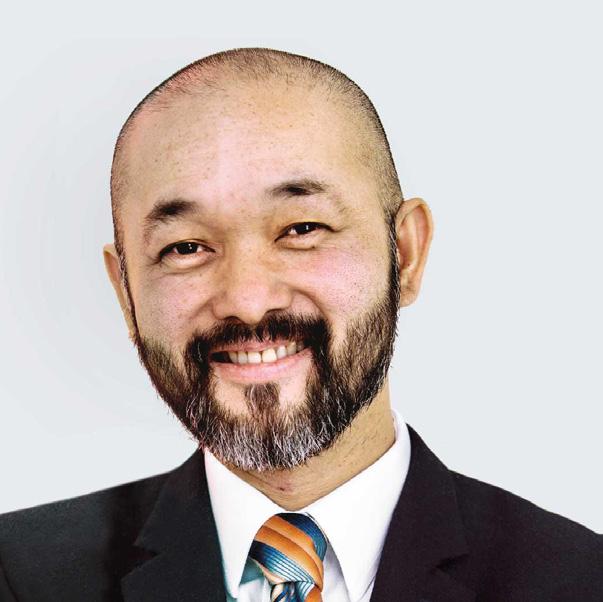
4 minute read
All aboard in tackling healthcare variation
Authored by the Australian Commission on Safety and Quality in Health Care with medical journalist Nicole MacKee
Governing body and clinician engagement critical
When a hospital in the St Vincent’s Health Australia group was found to be an outlier in bloodstream infections, all levels of leadership and the local clinical team swung into action to tackle the problem.
Professor Erwin Loh, National Chief Medical Officer and Group General Manager Clinical Governance for St Vincent’s Health Australia, says a higher than average rate of central lineassociated bloodstream infections was detected via the hospital’s key performance indicators.
‘It was in an intensive care unit (ICU), so we got the infectious diseases physicians and intensive care physicians together to talk, with the head of the ICU on board to oversee the investigation and lead the change,’ Professor Loh says.
The investigation found that the ICU was using central line insertion packs that were not best practice, and this was quickly addressed.
‘Sometimes variation has nothing to do with individual practices, it’s to do with the system,’ he says, noting that, in this case, low hand hygiene rates among doctors and poor documentation had also contributed to the issue.
To find out how to improve these processes, clinicians spent time at another hospital in the group that had much lower infection rates.
Professor Loh says improvement was swift because the clinical team was supported to carry out their own investigations and to learn from peers.

‘We looked at what they did well, where the gaps were, and the clinicians were able to learn from each other,’ Professor Loh says, adding that the management team did not have to say ‘you’ve got to change your ways’.
Professor Loh says nominated ‘change champions’ were key in driving practice reform.
‘Early adopters need to lead the change because you can’t only approach this from the top down; you have to start from the frontline and their peers,’ he says. ‘They can then demonstrate the short-term wins and how long-term change can be made.’
Support and engagement
Professor Loh cites this case as an example of the importance of broad engagement — from the frontline clinicians and the senior leadership team to board members — in addressing unwarranted healthcare variation.
‘The senior people in an organisation set the tone and the culture that everyone follows; they have to believe that we need to address unwarranted variation, and so it’s about educating boards and senior management about the need to do this,’ says Professor Loh, who recently presented in the Australian Commission on Safety and Quality in Health Care’s Better Care Everywhere program series. He adds, though, that board directors are keen to embrace policies targeting unwarranted healthcare variation.
‘Standardising practice and ensuring everyone is following the same protocols is a simple concept to reduce waste, make practice more efficient and improve patient outcomes,’ he says.
Ensuring an acceptable standard of patient safety and high quality health care was traditionally the remit of clinical teams and support staff; now, that responsibility extends to consumers, healthcare teams, managers, directors, governing bodies and departments of health.
‘Good health outcomes rely on effective governance and management processes, and establishing systems involving a large number of contributors in health service organisations and across the health system,’ the National Safety and Quality Health Service Standards User Guide for Governing Bodies states.
The Guide outlines the roles and responsibilities of governing bodies under the Clinical Governance Standard, Action 1.28, which requires health service organisations to:
• Ensure there are processes for monitoring variation from best practice and providing clinicians with feedback on their performance.
• Use this information to inform improvements in safety and quality systems.
Managing up
There is an increasing focus on doctors’ developing leadership skills in medical curricula, Professor Loh says, but skills in ‘managing up’ are equally important.
‘We need to teach doctors to be effective followers as well as effective leaders,’ he says.
Professor Loh outlines three principles to effectively ‘manage up’:
• Provide timely and accurate data and reports: Keep the lines of communication open and consider each manager’s preferred communication style and channels.
• No surprises: It’s important to share the bad news, as well as the good.
• Don’t just raise problems, present solutions: When flagging an issue, suggest recommendations and potential solutions.
‘So, what does this mean for patients?’ Professor Loh asks. ‘It means that they get the best care possible based on the latest literature and clinical guidelines.
‘For clinicians, they are supported to ensure that they’re practising in a safe way, because what you used to do 10 years ago might not be relevant today.’
And health governing bodies can be assured, he says, that services are providing the best possible care without wasting health resources.










